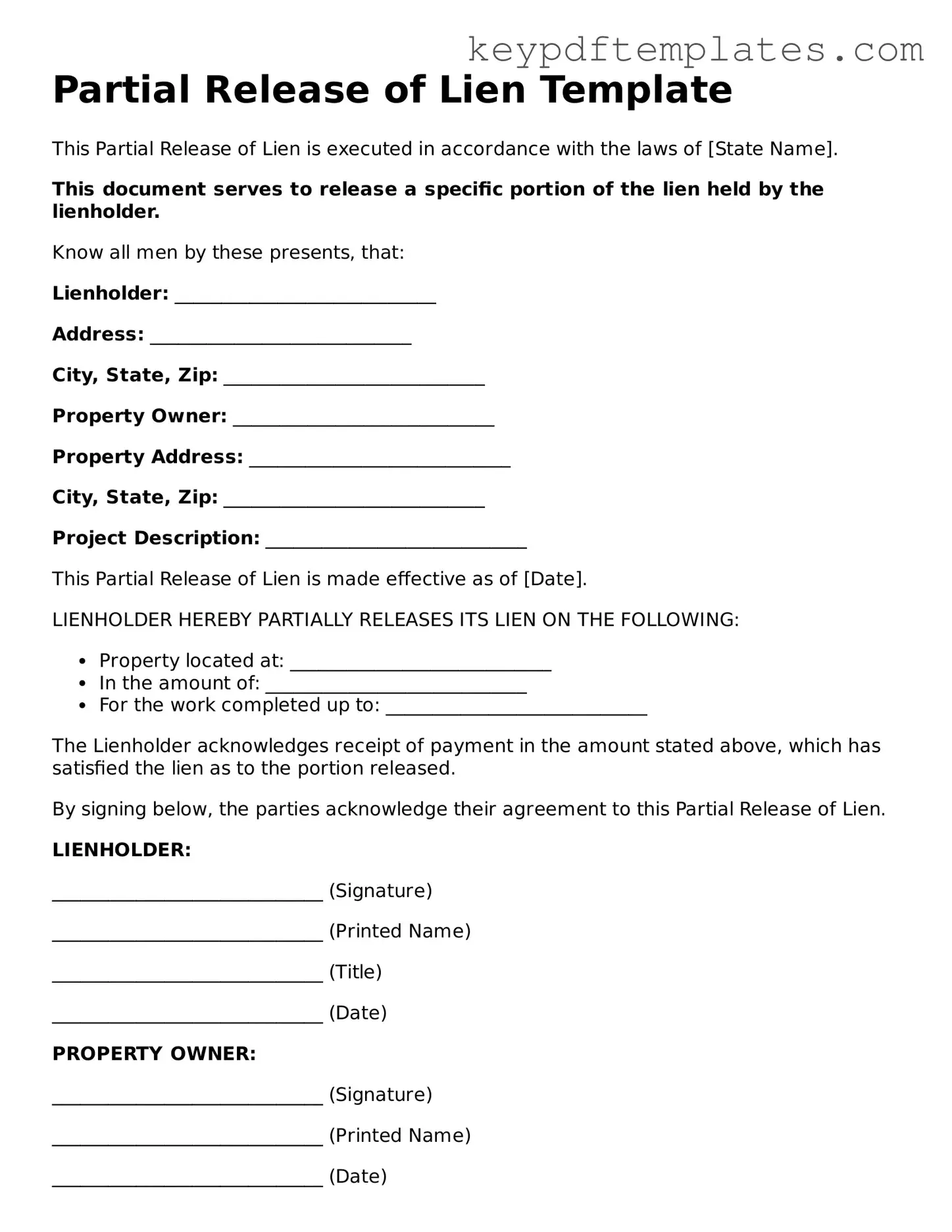Printable Partial Release of Lien Template
The Partial Release of Lien form is a legal document that allows a property owner to remove a lien from a specific portion of their property while keeping other liens intact. This form is often used in construction projects when a contractor or subcontractor has been paid for part of their work but still retains a claim for the unpaid balance. Understanding how to properly utilize this form can help facilitate smoother transactions and protect the interests of all parties involved.
Modify Document Online
